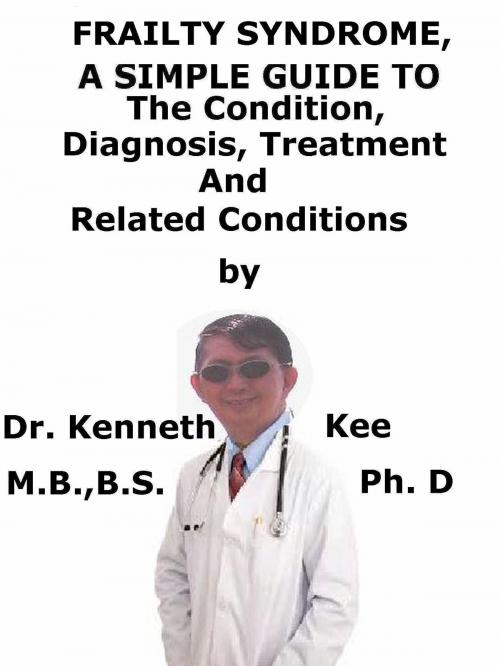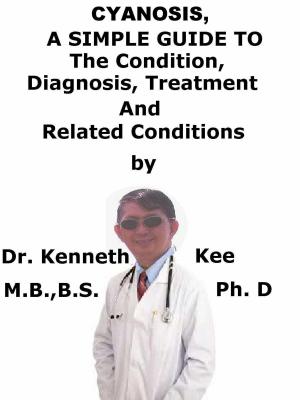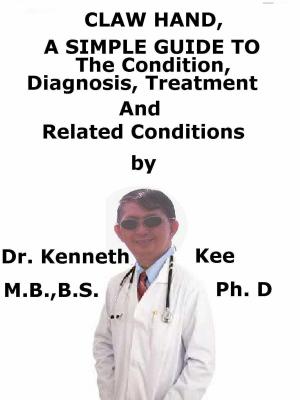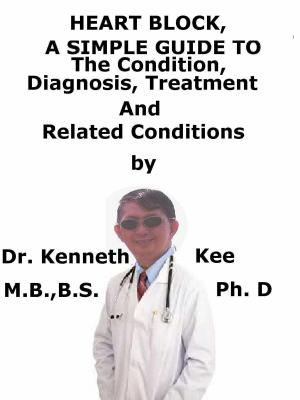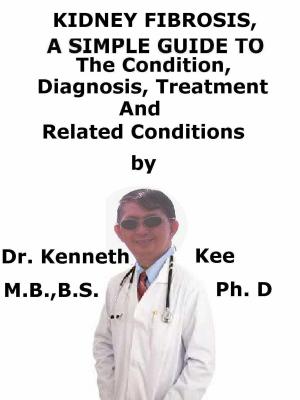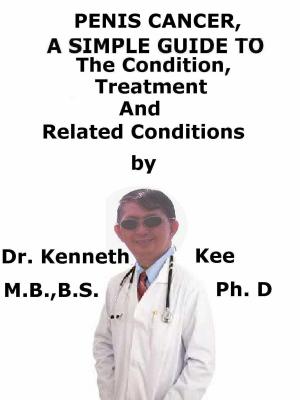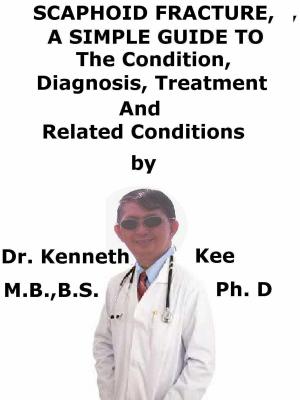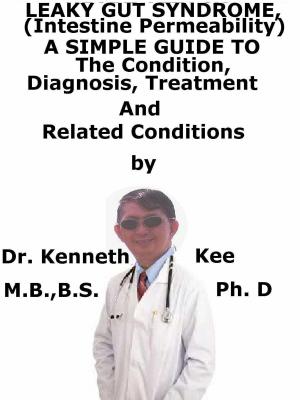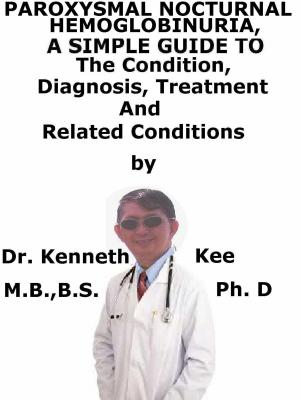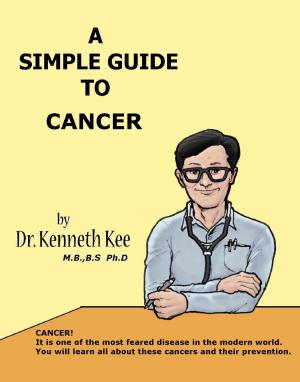Frailty Syndrome, A Simple Guide To The Condition, Diagnosis, Treatment And Related Conditions
Nonfiction, Health & Well Being, Medical, Specialties, Geriatrics, Family & Relationships, Aging| Author: | Kenneth Kee | ISBN: | 9780463282694 |
| Publisher: | Kenneth Kee | Publication: | June 6, 2018 |
| Imprint: | Smashwords Edition | Language: | English |
| Author: | Kenneth Kee |
| ISBN: | 9780463282694 |
| Publisher: | Kenneth Kee |
| Publication: | June 6, 2018 |
| Imprint: | Smashwords Edition |
| Language: | English |
This book describes the Frailty Syndrome, Diagnosis and Treatment and Related Diseases
While it lacks a standardized medical definition, older adults’ frailty requires special considerations in terms of treatment and nutritional needs.
Frailty Syndrome is a distinct medical syndrome where the aged individual has low reserves and is highly vulnerable to internal and external stressors.
While it is linked with disability and multiple co-morbidities, it can also be present in individuals who seem healthy.
Based on this conceptual framework, two major definitions with proposed assessment tools have emerged over the past decade also:
- The frailty phenotype (FP),
- The frailty index (FI).
A number of other definitions have also been described such as:
1.FRAIL (Fatigue, Resistance, Ambulation, Illnesses, Loss of weight)
2.Frailty Instrument for the Survey of Health, Ageing and Retirement in Europe (SHARE-FI), and
3.The Groningen Frailty Indicator.
While no single operational definition or simple assessment tool has been agreed upon, a consensus has been agreed that Frailty:
1.Is a medical syndrome,
2.Indicates higher vulnerability to stressors, leading to functional impairment and adverse health outcomes,
3.Might be reversible or attenuated by interventions, and
4.Is treatable in primary care.
Frailty phenotype
The phenotypic definition of frailty as a geriatric syndrome was suggested and tested in the CHS, older men and women in the USA.
Frailty is operationally described as a syndrome meeting three or more of five phenotypic criteria:
1.Low grip strength: lowest 20% (by sex, body mass index),
2.Slowness by slowed walking speed - Walking time/15 feet: slowest 20% (by sex, height),
3.Low level of physical activity - Kcal/week: lowest 20%
(Males: 383 Kcal/week; Females: 270 Kcal/week)
4.Low energy or self-reported exhaustion, and poor endurance
5.Unintentional weight loss >10 lb lost unintentionally in a previous year
A pre-frail stage, in which one or two criteria are present, recognizes a subset at high risk of progressing to frailty.
Older persons with none of the above five criteria are classified as non-frail.
This definition diagnoses frailty as a distinct medical entity differentiated from disability
While many (but not all) frail persons are disabled, not all disabled persons are frail.
Frailty index
The frailty index defines frailty as the collective deficits identified in a complete geriatric appraisal.
The criteria for a variable to be regarded as a deficit are :
1.Acquired,
2.Age-linked,
3.Linked with an adverse outcome, and
4.Should not saturate too early.
Recent advances in the pathogenesis of frailty described in the section are almost exclusively based on the Frailty Phenotype definition.
Causes:
These disorders are each individually linked with a higher chance of frailty:
1.A pro-inflammatory state
2.Sarcopenia
3.Anemia
4.Relative deficiencies in anabolic hormones (androgens and growth hormone)
5.Excess exposure to catabolic hormones (cortisol),
6.Insulin resistance
7.Glucose levels
8.Compromised altered immune function
9.Micronutrient deficiencies and
10.Oxidative stress
Symptoms:
1.Anorexia or poor appetite
2.Sarcopenia or loss of body mass
3.Immobility or decreased physical activity
4.Atherosclerosis
5.Balance impairment
6.Depression
7.Cognitive impairment
Diagnosis:
A range of tests for identifying frailty are available
1.PRISMA 7 Questionnaire
2.Groningen Frailty Indicator questionnaire
3.Slow walking speed
Treating Frailty:
1.Complete exercise
2.Complete medicine review
3.Nutrition
Increase food intake
Enough proteins
Orexigenic agents for appetite
4. Hormone -male/female
5.Balance exercise
6.Mobility
TABLE OF CONTENT
Introduction
Chapter 1 Frailty Syndrome
Chapter 2 Causes
Chapter 3 Symptoms
Chapter 4 Diagnosis
Chapter 5 Treatment
Chapter 6 Prognosis
Chapter 7 Sarcopenia
Chapter 8 Malnutrition
Epilogue
This book describes the Frailty Syndrome, Diagnosis and Treatment and Related Diseases
While it lacks a standardized medical definition, older adults’ frailty requires special considerations in terms of treatment and nutritional needs.
Frailty Syndrome is a distinct medical syndrome where the aged individual has low reserves and is highly vulnerable to internal and external stressors.
While it is linked with disability and multiple co-morbidities, it can also be present in individuals who seem healthy.
Based on this conceptual framework, two major definitions with proposed assessment tools have emerged over the past decade also:
- The frailty phenotype (FP),
- The frailty index (FI).
A number of other definitions have also been described such as:
1.FRAIL (Fatigue, Resistance, Ambulation, Illnesses, Loss of weight)
2.Frailty Instrument for the Survey of Health, Ageing and Retirement in Europe (SHARE-FI), and
3.The Groningen Frailty Indicator.
While no single operational definition or simple assessment tool has been agreed upon, a consensus has been agreed that Frailty:
1.Is a medical syndrome,
2.Indicates higher vulnerability to stressors, leading to functional impairment and adverse health outcomes,
3.Might be reversible or attenuated by interventions, and
4.Is treatable in primary care.
Frailty phenotype
The phenotypic definition of frailty as a geriatric syndrome was suggested and tested in the CHS, older men and women in the USA.
Frailty is operationally described as a syndrome meeting three or more of five phenotypic criteria:
1.Low grip strength: lowest 20% (by sex, body mass index),
2.Slowness by slowed walking speed - Walking time/15 feet: slowest 20% (by sex, height),
3.Low level of physical activity - Kcal/week: lowest 20%
(Males: 383 Kcal/week; Females: 270 Kcal/week)
4.Low energy or self-reported exhaustion, and poor endurance
5.Unintentional weight loss >10 lb lost unintentionally in a previous year
A pre-frail stage, in which one or two criteria are present, recognizes a subset at high risk of progressing to frailty.
Older persons with none of the above five criteria are classified as non-frail.
This definition diagnoses frailty as a distinct medical entity differentiated from disability
While many (but not all) frail persons are disabled, not all disabled persons are frail.
Frailty index
The frailty index defines frailty as the collective deficits identified in a complete geriatric appraisal.
The criteria for a variable to be regarded as a deficit are :
1.Acquired,
2.Age-linked,
3.Linked with an adverse outcome, and
4.Should not saturate too early.
Recent advances in the pathogenesis of frailty described in the section are almost exclusively based on the Frailty Phenotype definition.
Causes:
These disorders are each individually linked with a higher chance of frailty:
1.A pro-inflammatory state
2.Sarcopenia
3.Anemia
4.Relative deficiencies in anabolic hormones (androgens and growth hormone)
5.Excess exposure to catabolic hormones (cortisol),
6.Insulin resistance
7.Glucose levels
8.Compromised altered immune function
9.Micronutrient deficiencies and
10.Oxidative stress
Symptoms:
1.Anorexia or poor appetite
2.Sarcopenia or loss of body mass
3.Immobility or decreased physical activity
4.Atherosclerosis
5.Balance impairment
6.Depression
7.Cognitive impairment
Diagnosis:
A range of tests for identifying frailty are available
1.PRISMA 7 Questionnaire
2.Groningen Frailty Indicator questionnaire
3.Slow walking speed
Treating Frailty:
1.Complete exercise
2.Complete medicine review
3.Nutrition
Increase food intake
Enough proteins
Orexigenic agents for appetite
4. Hormone -male/female
5.Balance exercise
6.Mobility
TABLE OF CONTENT
Introduction
Chapter 1 Frailty Syndrome
Chapter 2 Causes
Chapter 3 Symptoms
Chapter 4 Diagnosis
Chapter 5 Treatment
Chapter 6 Prognosis
Chapter 7 Sarcopenia
Chapter 8 Malnutrition
Epilogue
